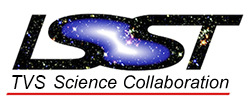Interacting Binaries
Members
Members that collaborated to generate this roadmap:
Federica Bianco (NYU, fb55@nyu.edu), Howard Bond, David Cieza, Nathan Smith
Primary subgroup contact:
Andrej Prsa (Villanova University - aprsa@villanova.edu)
Paula Szkody (University of Washington - szkody@astro.washington.edu)
Subgroup MAF engineer:
to be appointed
Subgroup Primary members
- Charles Bailyn - Yale University
- Roger Romani - KIPAC Kavli Institute for Particle Astrophysics and Cosmology
- Roberto Saito - Universidad Catolica de Chile
- Rolf Chini - Universidad Catolica del Norte
- Laura Chomiuk - Michigan State University
- Vicky Kalogera - Northwestern U
- Knox Long - Space Telescope Science Institute
- Paula Szkody - University of Washington
- Andrej Prsa - Villanova University
- Allen Shafter - San Diego State University
- Cid Mennickent
- Nicole Silvestri
- Poshak Gandhi
Subgroup Secondary members
- Avi Shporer - Caltech
- Ken Shen - UC Berkeley
- Eric Bellm - Caltech
- Robert Williams - Space Telescope Science Institute
- Scott Anderson
- Mark Huber
- Shri Kulkarni - Caltech
- David Nidever - LSST
- Vicky Kalogera - UChicago
- Suzanne Hawley - UW
- Julie Lutz
- Arne Henden
- Lucy Frey
- Chris Fryer
- Tom Matheson - NOAO
Roadmap Outline
CLOSE BINARY AND MULTIPLE STARS (through the biased eyes of Andrej Prsa)
Science Drivers
- studying and understanding stellar populations in our Galaxy and beyond;
- determining distances to objects fainter than V=20;
- estimating principal parameters from LSST light curves and ancillary data;
Observational Considerations
- how do various cadence proposals impact binary and multiple star science?
- how do photometric bands and ancillary data impact binary and multiple star science?
Key Questions
Key Questions that only LSST can answer:
- faint end of the binary and multiple star systems: MRLT relationships that are severely undersampled;
- volume-complete study of “nearby” stars, where nearby is farther than any other survey had ever gone before;
- direct (i.e. geometric, model-independent) distances to objects fainter than V=20.
Goals achievable with Baseline Cadence
Most goals outlined here can be achieved for baseline cadence.
Stellar Population Science roadmap
- Kepler eclipsing binary data (http://keplerEBs.villanova.edu) will be resampled to LSST OpSim cadence and the already existing study will be updated for the new cadence proposals. The study includes: (1) resampling Kepler data to LSST cadence; (2) running an off-the-shelf period finder (AoV) to determine periodicity; (3) deriving diagnostics that are available for Kepler EBs (widths, depths and separations of eclipses) and compare them against "ground truth" Kepler data. The study suffers from an assumption that multiplicity on the faint end is sufficiently close to the Kepler sample. This is likely quite untrue.
Required time for completion: 1 month. Requested collaboration: MAF ETA: 2016-08-01.
- Work is underway to determine the underlying distributions of binary and multiple star parameters based on the Kepler sample. Unfortunately, the overlap with LSST magnitude range is minimal, so the extrapolation across the vast span of magnitudes is as uncertain as our understanding of multiplicity rates of the low-mass stars.
Required time for completion: 1 month. Requested collaboration:none ETA: 2016-09-01.
- That taken into account, these distributions can be used to generate a reasonable set of binary and multiple objects that can be classified as such photometrically (i.e. eclipsing and/or ellipsoidal variables, light-time travel effects), and sampled using the OpSim-prescribed cadence. The simulated light curves will then be passed to period finders to assess completeness. This task is common to several subgroups and cross-subgroup involvement is strongly encouraged.
Required time for completion: 1 month. Requested collaboration: MAF, transiting exoplanets, pulsating variables, magnetically active stars, any other group interested in strictly periodic and quasiperiodic signals. ETA: 2016-12-31.
- Develop, implement and thoroughly test metrics and merit functions based on the sampled light curves above. This involves estimating the yield of multiple stars for a given LSST cadence proposal for different science cases outlined in the LSST Science Book. These metrics will then be delivered to the Simulation group for incorporation into MAF.
Required time for completion: 3 months. Requested collaboration: MAF, transiting exoplanets ETA: 2017-06-01.
- Identify all ancillary data that can help identify, classify and support LSST data. Of particular interest are OGLE, Kepler, SDSS and Gaia surveys. As part of this process, learn about instrument specifics to address saturation and bright limit to better understand options for spectroscopic follow-up.
Required time for completion: 3 months. Requested collaboration: MAF, transiting exoplanets ETA: 2017-12-31.
